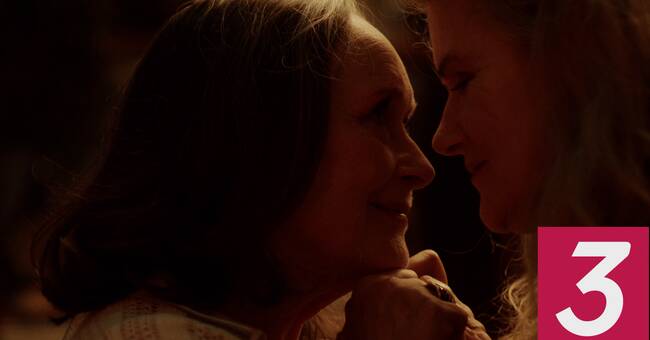A park environment in those days, two girls playing hide and seek, eluding each other, alternately looking forward and hiding behind the trees. A nice and telling picture that nicely sums up this little drama about two lesbian women's lives in a judgmental society.
Almost a lifetime has passed when we enter the next scene. Nina and Madeleine are now retired, they live on the same apartment floor but plan to move to Italy, to live there for the first time.
Nina is the more driving of them, has no children or ex-husband to relate to, seems to have lived out in a different way than Madeleine - who when it is time to sell the apartment begins to doubt. Her husband is dead but she is afraid of how her adult children, especially the hot-tempered son, will react to her moving away, and together, with another woman.
That of not daring to show color, of living one's life on an emotional periphery, is reflected in the film through the stylishly thought-out photo. In Vi two, many supporting scenes take place outside the picture, or out of earshot. Like that early scene that establishes their relationship for us; where the camera is in the bedroom while the couple is inside the bathroom, we see only a glimpse of their love, in the bathroom cabinet mirror.
Or the sequence at the dry cleaning where Nina finds out that Madeleine has started to falter. The latter, and we, stand inside the store and see through the window how Nina is getting more and more upset. We do not hear the conversation out there, but the rising roar of a tumble dryer spinning faster and faster.
It is generally a film that finds drama in everyday life. A few moments, such as when the angry Nina almost enters stalker mode, insinuate that we are on our way to the thriller's grounds but the filmmakers stop, turn the focus again towards the small, meaningful banal things. Do it with confidence.
In the forward-leaning role as Nina, we see old German star Barbara Sukowa who has lit up the canvas since the 70s, not least under the direction of Margarethe von Trottas and Rainer Werner Fassbinder. Here, however, she gets to play the second violin. Nina's background is completely shrouded in obscurity, probably not because it should make her enigmatic but only because the filmmakers mostly use her as a catalyst for Madeleine's (Martine Chevallier) late release.
But we still see her. When she clings to her beloved, and challenges her family, she fights not only for love, but perhaps even more to gain recognition that she is a big part of Madeleine's life.
The Two of Us is a so-called "small" film that stays on the carpet. For better or worse. The fine print is usually preferable, but it can also have a detrimental effect on the audience's commitment, as here, when the unassuming tone finally takes its toll, and rather makes the film ebb than put an end. But it is good and worth seeing, without a doubt.

